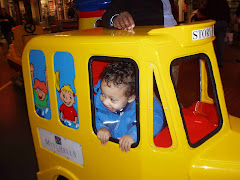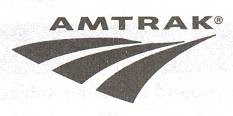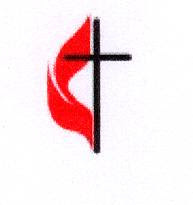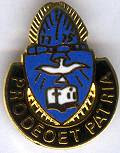Prickett's Fort II

When I had visited the fort in September 2007 the interior of the fort was closed and I had to be content with walking around the outside. I knew, however, that during the summer they had "costumed interpreters" and both Alice and I wanted to see that part of Prickett's Fort. And so, we saw this trip as an ideal opportunity to get inside the fort (see above) and do just that.

But first, a confession to make. You see, I spent 9 months in the late 1960's as a costumed interpreter for the "granddaddy" of all costumed interpreter historical attractions, Colonial Williamsburg. Here I am in my "Colonial Best" outside the Power Magazine (I also worked at the Colonial Gaol). Thus, I approach these attractions from a different perspective from most people. I am, so to speak, a former "fellow" professional in the field and thus I tend to judge most of the "costumed interpreters" I meet thusly.
Let me just say that overall, I thought the folks we talked to at Fort Prickett did an excellent job, "professionally speaking."
Our first stop was actually outside of the fort at the Native American display on the grounds near the fort. Th
 is display consisted of the "Eastern Version" of the "tipi." It actually ended up being an early version of what is known of today as a "Domed Tent." It consisted of branches arranged in a circle and bent toward the middle. The branches were covered with a "fake" version of Bark Slabs. At the top was a smoke hole. The Interpreter who was there pointed to the fact that actually, this was not completely an authentic re-creation. The Slabs were normally overlapped at the bottom with a passage-way for air so it could rise up between the slabs and create an up-draft to keep the smoke going out the top of the tipi. But still it was a good job, and the interpreter also did a good job.
is display consisted of the "Eastern Version" of the "tipi." It actually ended up being an early version of what is known of today as a "Domed Tent." It consisted of branches arranged in a circle and bent toward the middle. The branches were covered with a "fake" version of Bark Slabs. At the top was a smoke hole. The Interpreter who was there pointed to the fact that actually, this was not completely an authentic re-creation. The Slabs were normally overlapped at the bottom with a passage-way for air so it could rise up between the slabs and create an up-draft to keep the smoke going out the top of the tipi. But still it was a good job, and the interpreter also did a good job.A
 nother interpreter we visited, also outside the fort, was a blacksmith. Here again, while blacksmiths were around in those days, you would not normally find them working in the fort. He was making an axe head, again a typical tool. We talked about his work, and we also found out he was an archeologist of sorts and had participated in several "digs" of Native American sites in West Virginia.
nother interpreter we visited, also outside the fort, was a blacksmith. Here again, while blacksmiths were around in those days, you would not normally find them working in the fort. He was making an axe head, again a typical tool. We talked about his work, and we also found out he was an archeologist of sorts and had participated in several "digs" of Native American sites in West Virginia.Inside the fort, the main craft interpreter the day we were there was a weaver. When we arrived she was in the process of "counting threads" and getting ready to weave. The loom she was using dated back to the 1770's and had been made in the area (though she noted, not necessarily at Prickett's Fort). She also had several spinning wheels in the same location and demonstrated her spinning skills as well.


There was also an "Apprentice Tinsmith" at work, who doubled as the "shop keeper" at the "general store" they had inside the fort.

They also had 3 sheep in a pen in the fort. While obviously sheep need pasture to graze, it would have been normal, in times when the settlers were "forting up" for the sheep to be kept within the fort.

The last building we visited was the house built by the Job Prickett, the Grandson of the fort's "founder" Jacob. This house is an original and dates from 1857. Thus, it is on the Register of Historic Buildings, and is worthy of preservation in its own right. The house and the farm was occuppied by the Prickett family until the 1960's. In addition to the normal collection of 19th century antiques, there was also a collection of 19th century farm equipment outside the house.

In short, both Alice and I recommend that if you are in the area you need to visit Prickett's Fort.







No comments:
Post a Comment